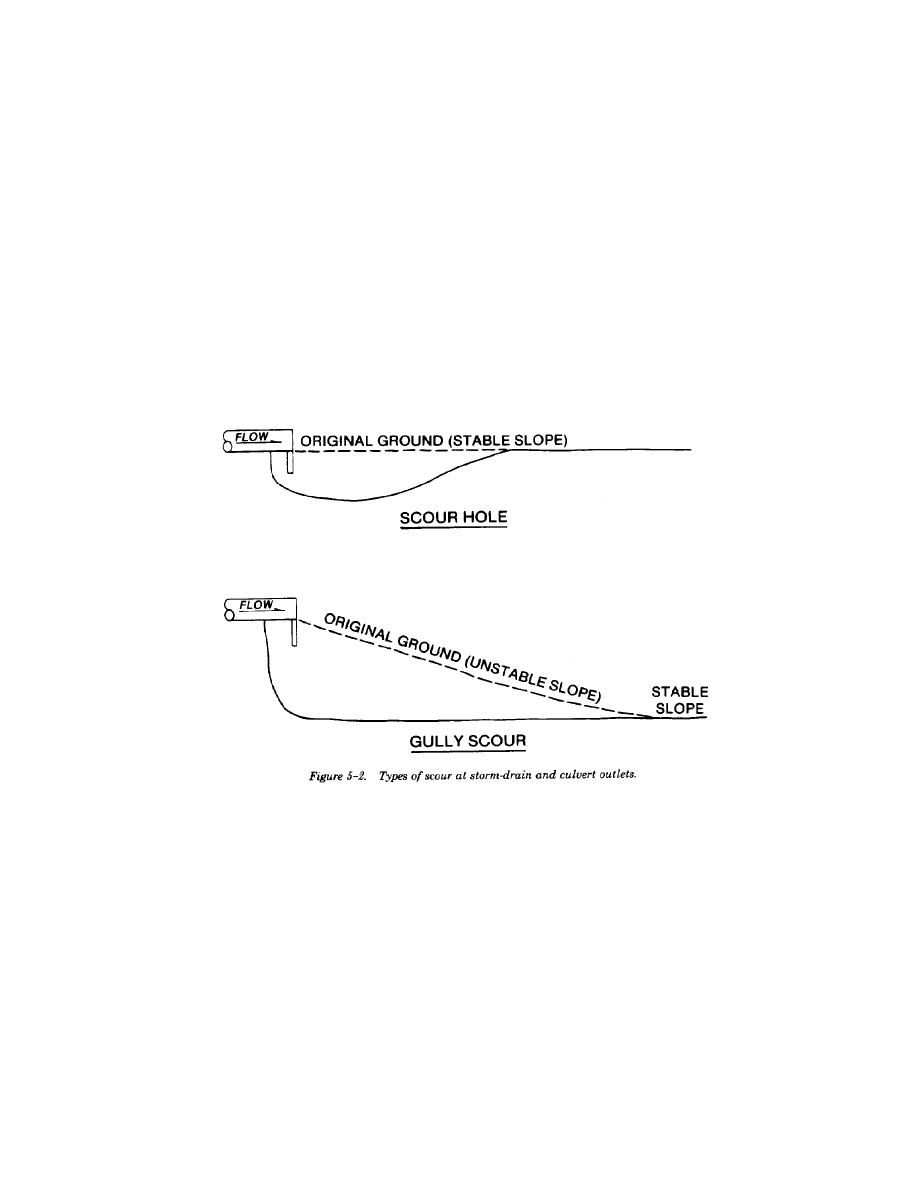
TM 5-820-3/AFM 88-5, Chap. 3
displacement caused by frost action. The most sat-
the endwall (outfall headwall) to intercept local
isfactory method of preventing such damage is to
inflow and direct it properly to protected outlets
restrict frost penetration beneath and behind the
such as field inlets and paved or sodded chutes that
wall to nonfrost-susceptible materials. Positive
will conduct the water into the outfall channel. The
drainage behind the wall is also essential. Founda-
proper use of solid sodding will often provide
tion requirements will be determined in accordance
adequate headwall and channel protection.
with procedures outlined in note 4 of paragraph 2-
6d. Criteria for determining the depth of backfill
5-3. Scour at outlets.
behind walls are given in TM 5-818-1.
In general, two types of channel instability can de-
i. The headwalls or endwalls will be large
velop downstream from storm sewer and culvert
enough to preclude the partial or complete stop-
outlets, i.e., either gully scour or localized erosion
page of the drain by sloughing of the adjacent soil.
termed a scour hole. Distinction between the two
This can best be accomplished by a straight head-
conditions can be made by comparing the original
wall or by wingwalls. Typical erosion problems
or existing slope of the channel or drainage basin
result from uncontrolled local inflow around the
downstream of the outlet relative to that required
endwalls. The recommended preventive for this
for stability as illustrated in figure 5-2.
type of failure is the construction of a berm behind
a. Gully scour is to be expected when the
be located at sites where the slope of the
Froude number of flow in the channel exceeds that
downstream channel or drainage basin is naturally
required for stability. It begins at a control point
moderate enough to remain stable under the
downstream where the channel is stable and
anticipated conditions or else it should be con-
progresses upstream. If sufficient differential in
trolled by ditch checks, drop structures, and/or
elevation exists between the outlet and the section
other means to a point where a naturally stable
of stable channel, the outlet structure will be com-
slope and cross section exist. Design of stable open
pletely undermined. The primary cause of gully
channels is discussed later in this manual.
b. A scour hole or localized erosion can occur
scour is the practice of siting outlets high, with or
without energy dissipators relative to a stable
downstream of an outlet even if the downstream
downstream grade in order to reduce quantities of
channel is stable. The severity of damage to be an-
pipe and excavation. Erosion of this type may be
ticipated depends upon the conditions existing or
extensive, depending upon the location of the stable
created at the outlet. In many situations, flow con-
channel section relative to that of the outlet in both
ditions can produce scour resulting in embankment
the vertical and downstream directions. To prevent
erosion as well as structural damage to the apron,
gully erosion, outlets and energy dissipators should
endwall, and culvert.
5-3



 Previous Page
Previous Page
